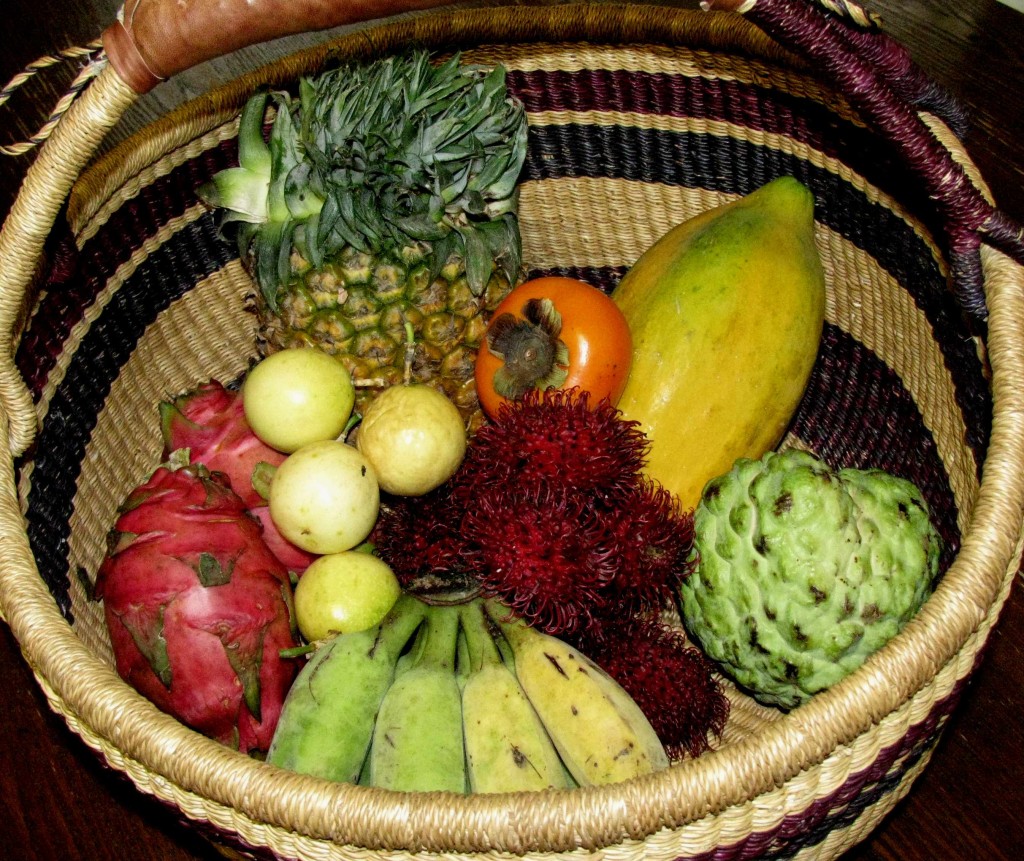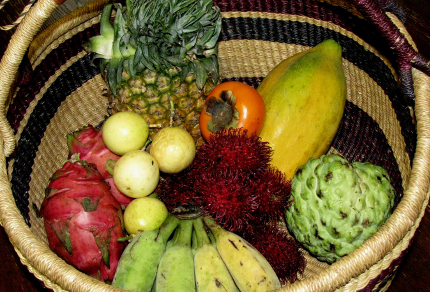Early this morning, dew shimmered like a glistening sheet fitted to the contours of the golf course’s dips and rises. Mist hung over the parkway’s lawns as I ran past Aplin’s Weir, glad to be on the move again after straining a calf muscle during our ‘bush’ cycling last weekend. Upstream from the weir, a crowd of people stood looking at the water, in which about twenty people bobbed near shore. I heard a man call out, “Any more swimmers?”
I continued running, and heard the same male voice shout a countdown to “Go!” Glancing over my shoulder, I watched the racers splash off toward an orange buoy about three-fourths of the distance across the Ross River. Soon, they formed a long line, with the fastest swimmers rounding the buoy and heading for a second buoy downstream from the first. After rounding the second buoy, the swimmers aimed for shore, completing a triangle. The dark surface of the river was tossed with splashes sun-shot into silver, through which pale arms repeatedly appeared and disappeared.
Retracing my steps, I ran across the weir bridge just as the fastest swimmers headed out for a second lap around the buoys while the stragglers pushed toward shore. Farther upstream, rowers skimmed over the water, and I thought again of how the Ross River Parkway is the focus of so much physical endeavour by Townsvillians in both organized and unorganized activities. Some of these are predictable – the rowers and runners and cyclists, but others take me by surprise, like those swimmers. While I write this, I can again see in my mind their reaching arms and that spurting, sunlit water.
Later in the morning, Vilis and I investigated two of Townsville’s three major Sunday morning markets. The first of these, which was held at the Exhibition Showgrounds just a few blocks south of Castle Hill, revealed itself as a huge flea market housed in one of the exhibition buildings and featuring all manner of small household goods, a few food vendors, and an astounding offering of used books. Vilis and I browsed through the books and, unable to resist, I bought a slim, perky-looking volume titled The Ultimate book of Camping & Bushwalking, authored by Lawrie and Julie McEnally. Then we drove to the second of the two markets, an open-air market held beneath huge awnings shading part of the Willows Shopping Centre parking lot.

Willows Market Fruits
The most striking feature of the Willows Market was the large number of vendors selling plants. The pavement fairly sprouted green. Fresh produce was also present in rich abundance, making me realize that my suppositions about gardening seasons must be a little off, since the bag of richly red, vine-ripened tomatoes I bought at the market had obviously been grown somewhere near Townsville during the hot, wet summer. In essence, the Willows Market could, I thought, be likened to a much-downsized version of Salamanca Market in Hobart, although it lacked the fair-like atmosphere and talented buskers. In comparing Townsville’s trio of large markets, Vilis and I decided that Cotter’s Market in the downtown Flinders Mall district (see http://maginams.ca//2010/03/08/) is definitely aimed at tourists, while the Showgrounds Market is aimed at people looking for a good deal on odds and ends. The Willows Market caters to the average family looking for healthy produce, landscaping plants, and home baking among other things.
Later, when I delved into my second-hand book purchase, I learned right away that Vilis and I had been ‘going bush’1 a lot in Australia. That is, we had been exploring the bush through hiking and camping. The Ultimate book of Bushwalking & Camping was impressively thorough in covering all the wheres, whens, and hows of bushwalking, camping, rough country travel, first aid for wilderness emergencies, and enjoyable outdoor activities like swimming and bird watching. The bits I liked best, however, were various tips on dealing with wildlife and bush food or ‘bush tucker.’2
For example, I discovered that, if I was planning to spend time walking through leech-infested waters, I should wear panty hose, since the nylon apparently deters those black, stretchy blood-suckers.3 And, should I wish to attract an emu, the thing to do is stand still and wave one arm back and forth, or lie down on the ground, stick up a leg or arm, and do the same with it.4 Wallabies and kangaroos, on the other hand, are apparently best approached by using the old only-move-when-they’re-not-looking strategy and, if caught in the frozen phase of this strategy, I should scratch my chest and sides in order to more closely resemble a roo or wallaby.4 Koalas, it seems, are best found not by looking away up into the heights of gum trees for small, furry bodies, but rather by looking for the scats produced by those small, furry bodies, which fall from the treetops onto the ground beneath the trees in which the koalas are feeding or sleeping.5 Useful hints, all.
The McEnalleys also had plenty of practical advice regarding preparing food in the bush. They included recipes for cooking classic Australian damper (a bread made using only self-rising flour, salt, and water),6 and bush buns sweetened with raisins.7 They mentioned baking foil-wrapped bananas in the hot coals of a fire8 and described how a roast of meat can be baked in a pit fitted out with hot coals and pre-heated rocks.9
In the section dealing with bush tucker, the McEnally duo discussed different kinds of wild meats and explained how a bush tucker novice like me could catch yabbies (freshwater crayfish) by using a cube of meat tied to a fishing line to lure the crustaceans within reach of a scoop net, after which I would pop them into a pot of boiling water.10 The most intriguing mention of bush tucker, however, was that of witchetty grubs, which are the large, wood-boring larvae of a moth. Should I want to sample this Aboriginal delicacy, I would locate the witchetty grubs by searching for piles of wood dust at the base of their food trees. Once having located my prey, I would drag a grub out of its hole by using a hooked bit of wire, after which I would hopefully find some more grubs and do the same to them. Then, I would behead them all, remove their guts (full of bitter wood dust), and fry the truncated and gutted grubs up in some butter or cook them in my fire’s hot ashes.11 I can see that Vilis and I will definitely be looking for piles of sawdust at the bases of trees the next time we go bush.
Reference:
1. Lawrie and Julie McEnally. 1994. The Ultimate book of Bushwalking & Camping. Bay Books, Sydney, p. 5; 2. Ibid, p. 71; 3. Ibid, p. 95; 4. Ibid, p. 85; 5. Ibid, p. 84; 6. Ibid, p. 69-70; 7. Ibid, p. 71; 8. Ibid, p. 69; 9. Ibid, p. 68; 10. Ibid, p. 82; 11. Ibid, p. 72.


